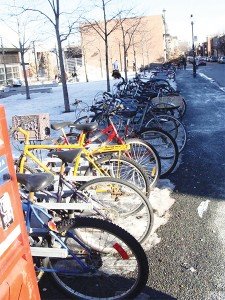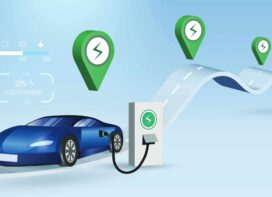Combining the integration of Bike, Bus, Metro and Walk (BBMW) with transit-oriented development, demand management and integrated pricing schemes, the authors present an ecomobility equation which outlines how developing cities can improve their transportation network.
In terms of urban development, the characteristics like extremely high population density, dramatic motorization, mixed land-use pattern, mixed traffic flow pattern, informal public transport, inefficient enforcement and high fatalities differentiate developing cities from their developed counterparts.
The article identifies the most important factors in achieving greener and more sustainable mobility, and charts their relationship in the ecomobility equation below:
EM = [(TD + AM + TM + GT + IP) S ] L
EM, or the effectiveness of implementing Eco- Mobility, may be manifested as the reduction of travel delays, emissions, and accident rates. This equation identifies a horizontal relationship between five key eco-mobility strategies, while recognising the exponential potential of both stakeholders (S) and leadership (L). The five key eco-mobility strategies are
- TD: transit-oriented development;
- AM: active mobility (non-motorized transportation);
- TM: transport management;
- GT: green transport (BBMW policy);
- IP: Integrated pricing schemes.
These five horizontal elements can be understood as the ‘push and pull’ factors between motorized vehicles, public transport and non-motorized transport modes.
Expanding the Equation
TD, or transit-oriented development, represents the development of public transport terminals as easy access points that the general public can reach by foot, bike or bus.
 AM, or active mobility, represents the promotion of safe and friendly environments for cycling and walking to work. In many developing cities, this already represents a large proportion of the population. A greater potential is foreseeable and can be accessible through well-designed public bike-sharing systems, and more fundamentally safe, comfortable, and friendly walking and cycling environments. It is worth noting that wheelchairs and lightweight mobility scooters for the disabled or elderly should be considered within active mobility and have gained increasing focus in recent years, as they are related to the very basic mobility rights for every individual in a healthy society with integrity.
AM, or active mobility, represents the promotion of safe and friendly environments for cycling and walking to work. In many developing cities, this already represents a large proportion of the population. A greater potential is foreseeable and can be accessible through well-designed public bike-sharing systems, and more fundamentally safe, comfortable, and friendly walking and cycling environments. It is worth noting that wheelchairs and lightweight mobility scooters for the disabled or elderly should be considered within active mobility and have gained increasing focus in recent years, as they are related to the very basic mobility rights for every individual in a healthy society with integrity.
The importance of TM, or transport management, is not limited to traffic management and real-time dynamic route planners. Parking management is also a crucial element in medium and large developing cities. Vehicles that cruise for parking, if not well directed and managed, can account for over 30% of road traffic in downtown areas during peak times (Barter, 2013). This results in long cruising times for individual drivers, traffic congestion, unnecessary pollution and other costs.
GT, green transport, and the integration of Bike, Bus, Metro and Walk (BBMW), is aimed to improve active mobility and public transit systems with more integrated and convenient services (Chang, 2006). However, the major managerial challenge arises from the perspective of how to efficiently implement transit-oriented development and apply ICT to achieve the seamless services of BBMW.
Comparatively, IP, or integratedpricing, may be the most complicated of the eco-mobility strategies. The advancement of electronic transaction technology allows more flexible and sophisticated pricing policies over the use of both public transit and private vehicles. The objective of IP is to reflect the true cost of using each transport mode. To impose the true cost on using private vehicles, which is higher than what travelers currently pay, has never been a simple task. People tend to address their own concerns from an individual perspective, but ignore system-level needs. It has been generally observed that the public is sensitive to paying more out-of-pocket, but may also adapt to the change and welcome it later on. Hence, it is for decisionmakers and practitioners to take time and thoughtful efforts to communicate, thereby letting travelers know how they can choose to benefit both the society and themselves. IP has also the objective of implementing congestion pricing (Barter, 2005). It is expected that motorized vehicles need to pay for social costs including congestion, air pollution, noise and safety.
 TrafficInfraTech Magazine Linking People Places & Progress
TrafficInfraTech Magazine Linking People Places & Progress

